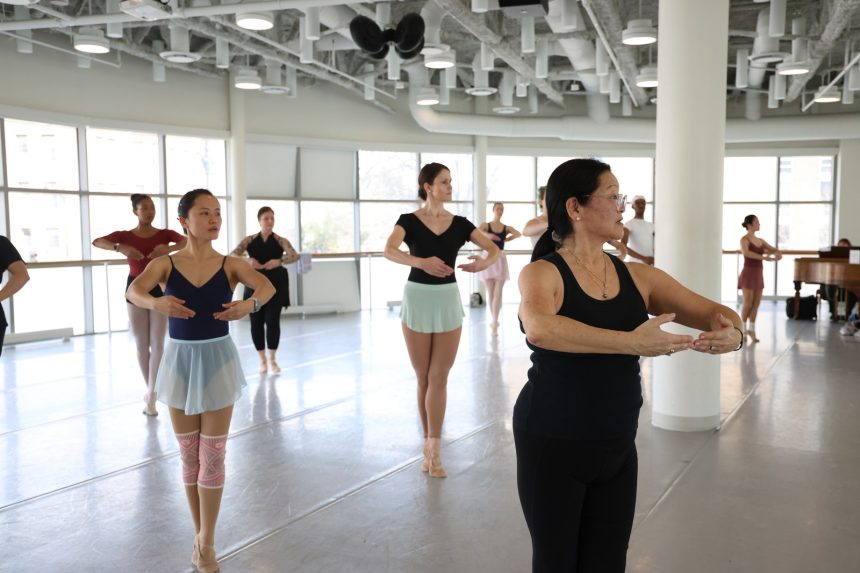Everything about the ballet studio felt strange but unmistakably familiar—the last-minute hair fixes, the floor marked by scruffs and fraying tape, and the chorus of vaguely Slavic accents, all wrapped in an odorous haze of chalk and sweaty feet. As I took the barre, the instructor uttered words I hadn’t heard in years—port de bras, arabesque, relevé, coupé, passé, soutenu—as she urged me to “find more room” in my spine.
Growing up, ballet had been a huge part of my life until I quit at the age of 15, when the focus on my imperfections became too much for me to bear. Now I was back in the studio as a 33-year-old mother, and I was as nervous as hell. At first I avoided looking in the mirror, where I knew I would find an older, heavier, and far less capable version of the dancer I used to be.
Of course, this was no ordinary ballet studio, and this was no ordinary ballet class. All of us were all more or less “beginners” taking our first class at the Washington School of Ballet—one of the only premier ballet companies in the world to offer a full curriculum for adults seeking to learn, or relearn, the art of ballet.
In 2021, then director Julie Kent recruited world-renowned dancer and choreographer Miya Hisaka to revive the program after enrollment had taken a dip during COVID. Quickly, Hisaka got to work, creating a curriculum complete with seven levels of classes—from beginner basics to advanced. In just three years she has doubled the number of faculty and classes available per week while quintupling the number of students, from 1,600 to more than 8,000 and counting.
Born to Japanese American parents who were forcibly relocated to internment camps during World War II, Hisaka grew up in Cleveland, where she says she never felt like she belonged. That was until she saw a local performance of the Alvin Ailey American Dance Theater—one of the first dance companies in the world to feature dancers of color. “I saw them, and I knew right away: That’s what I want to do. That’s who I am,” she says. At 17, Hisaka was recruited by Ailey, which kicked off a decades-long career as a professional dancer and teacher, including a nearly 30-year stint as head of the dance program at Georgetown University.








